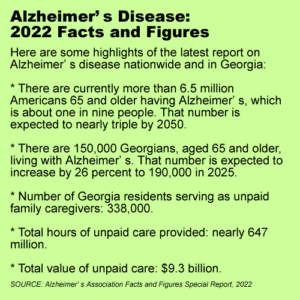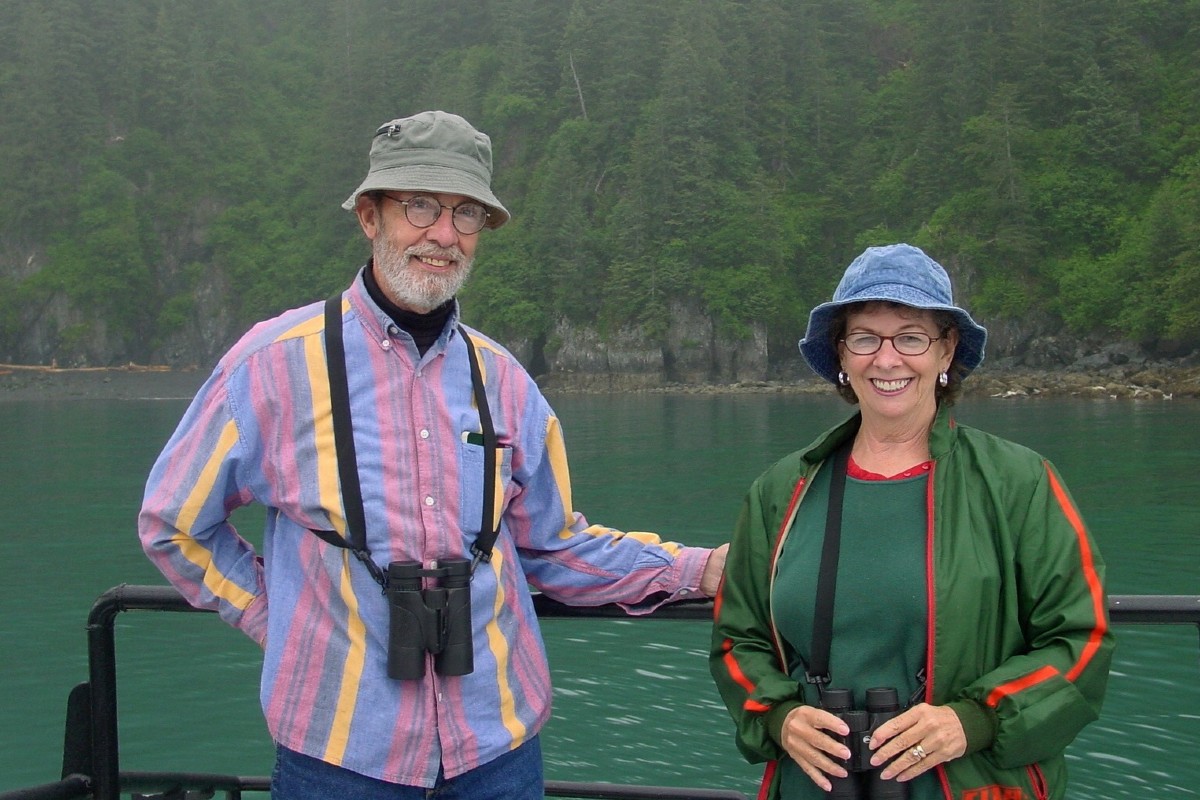(Editor’s note: One family’s life has changed, as Alzheimer’s entered their lives. We asked Rick Krause to tell us how it has affected his and Sandy’s life. Through it all, they both remain positive, grateful and even happy. Rick’s explanation, we hope, can give others a path for the future. –eeb
By Rick Krause
LILBURN, Ga. | Sandy and I have been married nearly 52 years, no children, and we are generally inseparable in our life and activities. We enjoy traveling, chiefly road trips in North America, but numerous trips internationally. We like sightseeing, camping, backpacking, birding, botanizing; and hobbies, collecting, reading, sports, and more.
It has now been about five years that I have been caregiving for Sandy, who was diagnosed with Alzheimer’s Disease in 2016. Understandably, the level of my caregiving was practically nonexistent near the beginning and increased as her memory and functioning declined as the disease progressed.
Our first indication of memory problems occurred in 2011 during a trip to the Florida Keys and Everglades. Sandy, like me an avid birder, failed to come up with the name of the osprey, a bird she knew and recognized well. This and subsequent occurrences led us to believe that it was more than normal aging and “old age forgetfulness”. Her diagnosis: “Neurodegenerative Dementia consistent with Alzheimer’s Disease” in 2016.
We have shared the journey of life, but each doing their part on a 50-50 basis. Our journey is now changing and the shared components are probably about 80-20 today, but that varies from day to day. To clarify, my “caregiving” is actually “care partnering,” as Sandy still cares for some activities for me or both of us.
 Caregiving, as it relates to my 80 percent portion, is a combination of routine chore-like, homemaker duties and responsibilities, administrative and scheduling, medication maintenance, home and yard maintenance, finances, shopping, meal preparation, appointments, computer activities, and more. My caregiving is spousal; I have no training for this; but I’m learning. Her ever-changing behavior presents ongoing challenges for me; what worked one day often is not applicable the following day; there are always changes. Although Sandy is limited in her abilities, I encourage her to do those things that she can, and thank her for doing so, as that maintains a sense of purpose for her.
Caregiving, as it relates to my 80 percent portion, is a combination of routine chore-like, homemaker duties and responsibilities, administrative and scheduling, medication maintenance, home and yard maintenance, finances, shopping, meal preparation, appointments, computer activities, and more. My caregiving is spousal; I have no training for this; but I’m learning. Her ever-changing behavior presents ongoing challenges for me; what worked one day often is not applicable the following day; there are always changes. Although Sandy is limited in her abilities, I encourage her to do those things that she can, and thank her for doing so, as that maintains a sense of purpose for her.
My caregiving also includes providing emotional comfort. That is the hardest part. When we are together, I try to be “where she is.” Doing so increases her comfort and reduces confusion. I try to have empathy, compassion, acceptance, and patience and tolerance. I’ll read from a variety of books and magazines aloud, as she can no longer read. I’ll bring up YouTube programs, webinars, and music. We’ll look through photo albums. we’ll participate in support group sessions online and in person. And we still visit parks, take hikes, work in our yard, a wildlife sanctuary, that she and I love.
We live life on life’s terms, accept life as it is today, stay in the moment, and avoid fear and worry of the future. Having no hope for a miracle or timely cure, abatement, or remission, we don’t waste emotional energy on such false hopes and unfounded expectations, and thus can accept life and live in the day. And through all this, in spite of this disease, Sandy (and I) have remained positive, grateful, and even happy, as she (and I) navigate our journey.
- Have a comment? Send to: elliott@brack.net











Follow Us